Angola |
|
|
|
| Übersicht – Contents: | |
Angola |
|
|
|
| Übersicht – Contents: | |
Flagge – Flag: |
|
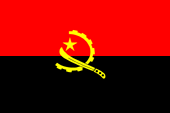 |
Nationalflagge
– national flag, |
historische Flaggen – historical Flags: |
|
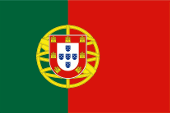 |
1911–1975, |
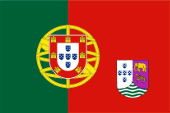 |
60-er Jahre 19. Jhd. / sixties of the 19th cent., geplante Flagge für Angola – purposed flag for Angola, Seitenverhältnis – ratio = 2:3, Quelle/Source: nach/by: Wikipedia (D) |
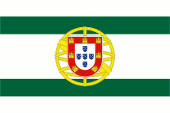 |
bis/to 1935, Flagge eines Oberkommissars – flag of a High Commissioner, Seitenverhältnis – ratio = 2:3, Quelle/Source nach/by: Flaggenbuch 1939 |
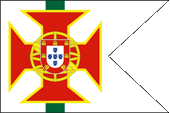 |
1935–1961, Flagge eines Distriktskommandanten – flag of a District Commandant, Seitenverhältnis – ratio = 2:3, Quelle/Source nach/by: Flaggenbuch 1939 |
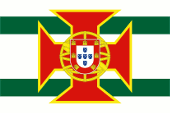 |
1935–1975, Flagge des Generalgouverneurs – flag of the Governor General, Seitenverhältnis – ratio = 2:3, Quelle/Source nach/by: Die Welt im bunten Flaggenbild |
Bedeutung/Ursprung der Flagge – Meaning/Origin of the Flag: |
|
| Die Nationalflagge
wurde am 11.11.1975 nach der Erlangung der Unabhängigkeit von Portugal eingeführt. Sie
basiert auf der Flagge der MPLA, der erfolgreichen Befreiungsbewegung, welche seit 1964
eine rot-schwarze Flagge mit einem gelben Stern führte. Nun zeigt die Flagge, zentral
angeordnet, ein halbiertes Zahnrad, einen Stern und ein Buschmesser. Rot steht für das im Befreiungskampf vergossene Blut, Schwarz steht für Afrika, den dunklen Erdteil und Gold (Gelb) weist auf die natürlichen Reichtümer des Landes hin. Das Zahnrad symbolisiert die Arbeiterklasse, das Buschmesser die Bauern, der Stern Fortschritt und Internationalismus. |
The national flag was
introduced on the 11th of November, 1975 after achieving independence from Portugal. It is
based on the flag of the MPLA, the successful liberation-movement, which flew a
horizontally red-black striped flag with a golden star since 1964 . Now the flag shows in
the centre a halved gear or cogwheel, a star and a machete. Red stands for the blood spilt during the struggle for freedom, black stands for the Dark Continent of Africa, and gold (yellow) points to the natural resources of the country. The gear/cogwheel symbolizes the working class, the machete stands for the farmers and the star for progress and internationalism. |
| In der Zeit als portugiesische Kolonie wurde ausschließlich die portugiesische Nationalflagge verwendet, da man die Kolonien als fester Bestandteil des Mutterlandes betrachtete, und nicht als Außenbesitzungen. Das bedeutete, das portugiesische Kolonien nie eigene Flaggen hatten, auch wenn es in den sechziger Jahren des 20. Jahrhunderts Bestrebungen gab Flaggen für die Kolonien einzuführen, indem man das Wappen der Kolonie in das fliegende Ende der portugiesischen Nationalflagge platzierte. Diese Pläne wurden jedoch nie realisiert. | In the times of the
Portugese colony was solely in use the Portugese national flag because they saw the
colonies as permanent component of the motherland and not as outer possessions. This implys that Portugese colonies never had
own flags, even if there were ambitions in the sixties of the 20th century to introduce
flags for the colonies by placing of the coat of arms of the colony in the flying end of
the Portugese national flag. But this plans became never realized. |
| Quelle/Source:
Flags of the World,
Die Welt der Flaggen,
Flaggen Wappen Hymnen Translator of the English text: Joachim Nuthack |
|
Wappen – Coat of Arms: |
|
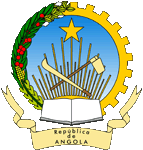 |
seit/since 2010, Wappen von Angola – coat of arms of Angola, Quelle/Source nach/by: Wikipedia (EN), Corel Draw 4 |
 |
1935–1975, Wappen von Angola – coat of arms of Angola, Quelle/Source nach/by: Wikipedia (D) |
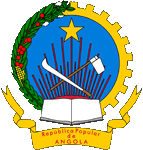 |
1975–1992, Wappen von Angola – coat of arms of Angola, Quelle/Source nach/by: Wikipedia (EN), Corel Draw 4 |
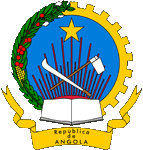 |
1992–2010, Wappen von Angola – coat of arms of Angola, Quelle/Source nach/by: Wikipedia (EN), Corel Draw 4 |
Bedeutung/Ursprung des Wappens – Meaning/Origin of the Coat of Arms: |
|
| Das Wappen von Angola wurde, wie die Flagge, 1975 eingeführt. Es zeigt ebenfalls das Buschmesser überkreuzt mit einer Hacke, die Arbeit und den Beginn des bewaffneten Kampfes symbolisierend. Darüber der gelbe Stern. Dessen fünf Zacken stehen für Einheit, Freiheit, Gerechtigkeit, Demokratie und Fortschritt. Die aufgehende Sonne unterhalb der Werkzeuge verkörpert die Entstehung der neuen Nation. Das aufgeschlagene Buch ist Symbol für Ausbildung und Kultur. Das Wappen wird umkränzt von einem schwarzen, halben Zahnrad, sowie Maispflanzen und Kaffee- und Baumwollzweigen. Es wurde 1992 leicht abgeändert, als sich die Staatsbezeichnung im goldenen Band unterhalb des Wappens von "Repúblika Popular de Angola" in "República de Angola" änderte. | The coat of arms of
Angola was introduced, as the flag, in 1975. It also shows the machete crossed with a hoe,
symbolizing work and the start of the armed struggle. Above this symbolic cross the yellow
star. Its five points stand for unity, freedom, justice, democracy and progress. The
rising sun below the tools represents the formation of the new nation. The opened book is
a symbol for education and culture. The coat of arms is bordered by a black, half a gear/cogwheel, as well as
corn plants, and coffee and cotton twigs. |
| Quelle/Source:
Flags of the World,
Die Welt der Flaggen,
Flaggen Wappen Hymnen Translator of the English text: Joachim Nuthack |
|
Flugzeugkokarde – aircraft roundel: |
|
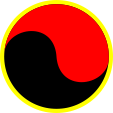 |
Flugzeugkokarde – aircraft roundel Quelle/Source: nach/by Wikipedia (EN) |
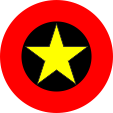 |
1975–1980, Flugzeugkokarde – aircraft roundel Quelle/Source: nach/by Wikipedia (EN) |
| Landkarten – Maps: |
Lage – Position: |
Landkarte des Landes – Map of the Country: |
Zahlen und Fakten – Numbers and Facts: |
|
|
|
|
|
|
|
|
|
|
|
|
|
|
|
|
|
|
|
|
|
|
Geschichte: |
|
13. Jahrhundert · die ursprünglich in der Region lebenden Khoisan-Völker werden durch zuwandernde Bantu-Volksgruppen verdrängt 1482 · Entdeckung durch den portugiesischen Seefahrer Diego Cao 1483 · Portugal errichtet Handelsposten an der Küste 1576 · Gründung von Luanda 19. Jahrhundert · Portugal beginnt mit der systematischen Eroberung und Besetzung der Region des heutigen Angola 1885 bis 1894 · Grenzverträge mit Belgien, Festlegung der Grenze zu Belgisch-Kongo 1886 · Grenzvertrag mit dem Deutschen Reich, Festlegung der Grenze zu Deutsch-Südwestafrika 1905 · Grenzvertrag mit Großbritannien, Festlegung der Grenze zu Rhodesien 1951 · Portugal wandelt die Kolonie Angola zu einer Überseeprovinz (Bestandteil des Mutterlandes) 1959 · antikolonialer Aufstand 1960 · Beginn des Unabhängigkeitskrieges unter Beteiligung von vier Unabhängigkeitsbewegungen (FNLA, MPLA, FLEC und UNITA) 1964 · die Unabhängigkeitsbewegungen werden militärisch zurückgedrängt 1973 · die Guerillaaktivitäten der Unabhängigkeitsbewegungen werden eingestellt, faktisches Ende des Unabhängigkeitskrieges 25.04.1974 · Revolution in Portugal, Sturz des Salazar-Regimes, Einleitung einer unverzüglichen Entkolonialisierung der abhängigen Gebiete, in Angola kommt es zu militärischen Auseinandersetzungen zwischen den Unabhängigkeitsbewegungen 11.11.1975 · die sozialistische MPLA verkündet in Luanda die Unabhängigkeit Angolas (Volksrepublik Angola), die FNLA und UNITA tun dies in Huambo (Republik Angola), Beginn des Bürgerkriegs, die FNLA erleidet empfindliche Verluste und zieht sich nach Zaire zurück 1983 · Truppen aus Südafrika dringen 250 km tief in den Süden Angolas ein und zerstören Stützpunkte der Rebellenbewegung SWAPO aus Südwestafrika (heute Namibia), sie werden von kubanischen Truppen zurückgeschlagen 1991 · die MPLA löst sich vom Marxismus-Leninismus, MPLA und UNITA verständigen sich auf die Einrichtung eines Mehrparteiensystems 1992 · erste freie Wahlen, die MPLA geht als Sieger hervor und gewinnt auch die Präsidentschaftswahl, die UNITA unterstellt Wahlbetrug, der Bürgerkrieg flammt erneut auf 1994 · Friedensvertrag zwischen Regierung und UNITA, Integration der UNITA 1997 · Bildung einer nationalen Einheitsregierung unter Beteiligung der UNITA 1998 · der Bürgerkrieg flammt erneut auf 2002 · Jonas Savimbi – der Führer der UNITA – kommt bei den Kämpfen ums Leben, Waffenstillstand, die UNITA gibt den bewaffneten Kampf auf und übernimmt die Rolle der führenden Oppositionspartei |
History: |
|
13th century · the originally in the region living Khoisan peoples become displaced by immigrating Bantu ethnic groups 1482 · discovery by the Portuguese seafarer Diego Cao 1483 · Portugal establishes trading posts on the coast 1576 · Luanda founded 19th century · Portugal begins with the systematic conquest and occupation of what is now Angola 1885 to 1894 · Border treaties with Belgium, fixing of the border with the Belgian Congo 1886 · Border treaty with the German Empire, fixing of the border with German South West Africa 1905 · Border treaty with the United Kingdom, fixing of the border with Rhodesia 1951 · Portugal changes the colony of Angola to an overseas province (part of the mother country) 1959 · anti-colonial uprising 1960 · start of the war of independence under participation of four independence movements (FNLA, MPLA, FLEC and UNITA) 1964 · the independence movements are suppressed militarily 1973 · the guerrilla activities of the independence movements cease, de facto end of the war of independence 25th of April in 1974 · revolution in Portugal, overthrow of the Salazar regime, initiation of an immediate decolonization of the dependent territories, in Angola there are military clashes between the independence movements 11th of November in 1975 · the socialist MPLA proclaims the independence of Angola (People's Republic of Angola) in Luanda, the FNLA and UNITA do so in Huambo (Republic of Angola), beginning of the civil war, the FNLA suffers heavy losses and withdraws to Zaire 1983 · troops from South Africa invade 250 km deep into southern Angola and destroy bases of the rebel movement SWAPO of South West Africa (today Namibia), they are repulsed by Cuban troops 1991 · the MPLA breaks away from Marxism-Leninism, MPLA and UNITA agree on the establishment of a multi-party system 1992 · first free elections, the MPLA is victorious and wins also the presidential election, UNITA suspects electoral fraud, the civil war flares up again 1994 · peace treaty between the government and UNITA, integration of UNITA 1997 · formation of a national unity government under participation of UNITA 1998 · the civil war flares up again 2002 · Jonas Savimbi – the leader of UNITA – dies in the fighting, ceasefire, UNITA gives up the armed struggle and takes on the role of the leading opposition party |
| Quelle/Source: Atlas zur Geschichte, Wikipedia (D), |
Ursprung des Landesnamens – Origin of the Country's Name: |
|
| Der Name von Angola geht auf den Titel des Königs des alten Kongoreiches zurück. Er lautete "N'gola". | The name of Angola goes back to the title of the king of the ancient kingdom of Congo. It was "N'Gola". |
| Quelle/Source: Handbuch der geographischen Namen | |